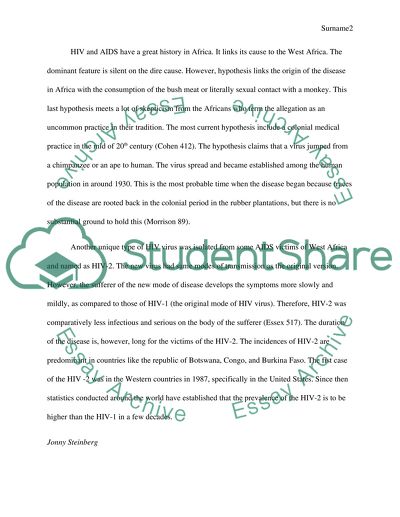Cite this document
(“HIV and AIDS in Africa Essay Example | Topics and Well Written Essays - 2000 words”, n.d.)
Retrieved from https://studentshare.org/health-sciences-medicine/1398803-argument
Retrieved from https://studentshare.org/health-sciences-medicine/1398803-argument
(HIV and AIDS in Africa Essay Example | Topics and Well Written Essays - 2000 Words)
https://studentshare.org/health-sciences-medicine/1398803-argument.
https://studentshare.org/health-sciences-medicine/1398803-argument.
“HIV and AIDS in Africa Essay Example | Topics and Well Written Essays - 2000 Words”, n.d. https://studentshare.org/health-sciences-medicine/1398803-argument.


